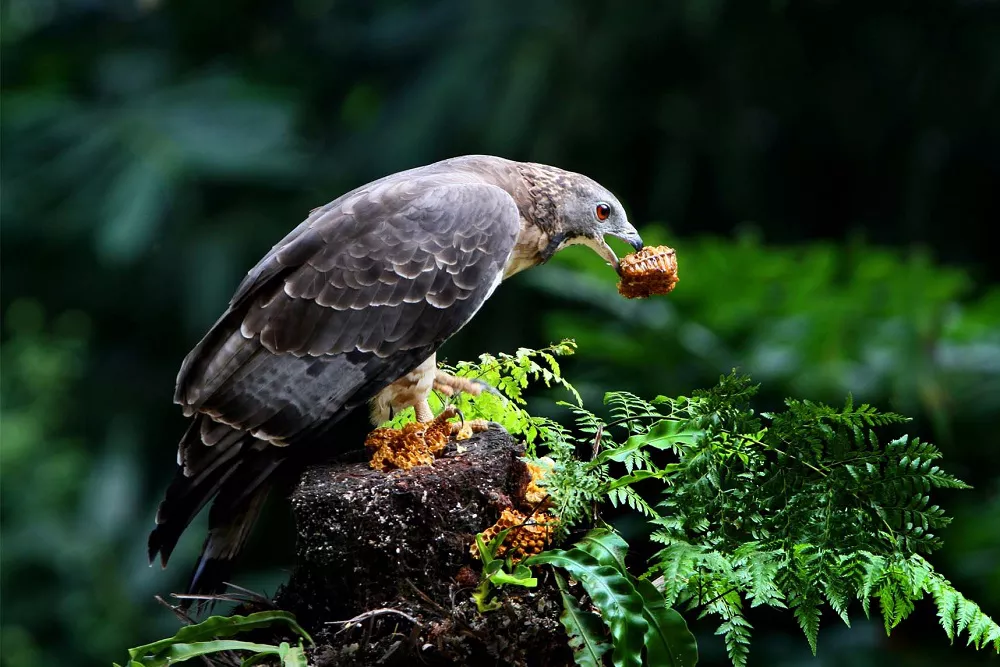Honey buzzards, also known as Pernis apivorus, are birds of prey that primarily feed on the larvae of social wasps and bees. They are found throughout Europe, Asia, and Africa, and are known for their distinctive appearance and unique feeding habits.
Unlike other birds of prey, honey buzzards are not equipped with sharp talons or beaks, which makes it difficult for them to hunt and kill large prey. Instead, they have evolved a specialized diet that allows them to feed on the larvae of social wasps and bees, which they extract from their nests.
Honey buzzards have a long, narrow beak with a hooked tip that is ideal for reaching deep into wasp and bee nests. They also have a unique tongue that is covered in sticky saliva, which they use to capture and remove the larvae from the nest.
In addition to their specialized diet of social wasps and bees, honey buzzards will also occasionally feed on other insects, small mammals, reptiles, and amphibians. However, these types of prey make up a relatively small portion of their diet.
One of the most fascinating aspects of honey buzzards’ feeding behavior is their ability to locate and target wasp and bee nests with remarkable accuracy. They are able to do this by relying on their keen sense of sight, as well as their ability to pick up on the unique chemical signals that these nests emit.
Despite their specialized diet, honey buzzards are highly adaptable birds that are capable of surviving in a wide range of habitats. They are often found in wooded areas, where they can find plenty of wasp and bee nests to feed on, but they can also be found in grasslands, wetlands, and other types of environments.
Overall, honey buzzards are fascinating birds that have evolved a highly specialized diet that allows them to thrive in a variety of different habitats. Their unique feeding habits and remarkable hunting skills make them a true marvel of the avian world, and a testament to the power of adaptation and evolution.


 Facebook
Facebook  Instagram
Instagram  Youtube
Youtube 